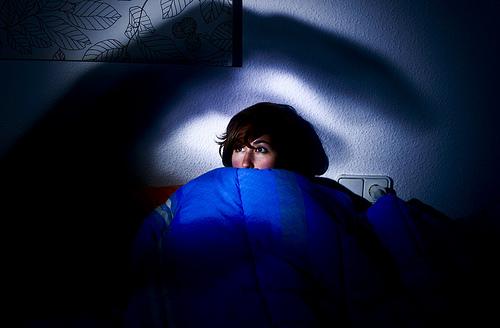Sleep Paralysis: Scary but Harmless

Sleep paralysis is an experience that tends to produce a lot of anxiety. It occurs primarily when falling asleep or waking up, and it’s characterized by the inability to move or talk despite being aware of your environment. It also tends to come with auditory hallucinations, like hearing footsteps coming towards you, and an intense feeling that there is something or someone present.
Despite the unpleasant and seemingly threatening nature of the episode, it is completely harmless and it can happen to anyone without being a sign of a pathology or illness. It’s associated with states of anxiety or stress. The hypothesis about why sleep paralysis occurs is that you briefly get stuck in a REM state when you wake up, causing you to experience characteristics of both states.

It lasts from one to three minutes, and although you can’t move a muscle voluntarily, your respiratory muscles continue functioning automatically. Sleep paralysis falls under the category of parasomnias, and is associated with narcolepsy.
Types of sleep paralysis
There are three types of sleep paralysis:
- Isolated sleep paralysis. This can occur in healthy individuals who are suffering high levels of stress, or who have jet lag, anxiety, or sleep deprivation. People who experience the isolated form will likely never experience it again. This form does not require seeking professional help.
- Familial sleep paralysis. In some cases the episodes repeat over time, although they’re not accompanied by any other symptom, and they occur among various other family members as well. There are few familial cases.
- Associated with another illness. Disorders like narcolepsy can be accompanied by episodes of sleep paralysis.
Characteristics of REM sleep and sleep paralysis
There are a few different stages of sleep, one of them being REM, or Rapid Eye Movement. This stage begins after approximately 70-100 minutes of sleep and is known for being the stage in which dreams occur. This phase is repeated 4 or 5 times throughout the night.
The body takes a few precautions to keep you safe while you’re asleep. The body’s muscles are paralyzed in order to protect you. For example, in a dream, you might be running from something or making movements that, if reproduced in real life, could put you or someone else in danger. A lot of brain activity is recorded during this stage.
When you wake up paralyzed, it means that the brain is still in a REM state, and despite being able to open your eyes, you can’t move. In addition, dreams can mix with reality, giving rise to hallucinations. Although they seem completely real at the time, they’re nothing more than dream material merging with reality.
Hypnagogic and hypnopompic hallucinations
If it weren’t scary enough to be unable to move even a centimeter, the experience becomes even more unpleasant when it comes with hallucinations. Auditory and visual hallucinations are common, and they tend to have a threatening quality. It’s common to hear footsteps approaching or see a silhouette in the room.
There’s also a strong sensation of presence, as if there were someone else in the room. Sometimes it feels like someone is touching you or pressing down on your chest, making it difficult to breathe. There are two types of hallucinations that can occur during sleep paralysis, depending on whether they occur while you’re falling asleep (hypnagogic) or while you’re waking up (hypnopompic).

It’s important to note that these hallucinations are not indicative of any type of disorder that you should worry about, because they’re nothing more than an extension of sleep during a wakeful state, and can happen to anybody. If they’re not accompanied by excessive daytime drowsiness, cataplexy, or other symptoms, there’s no cause for alarm.
Tips to prevent sleep paralysis
It’s not dangerous, and there’s no risk, so the best thing to do is try to relax, and to be aware that nothing bad is going to happen and that it only lasts a few minutes. There isn’t much you can do to leave this state once you’re in it. What you can do is take note of these tips to make it less likely to occur.
Because one of the main causes is stress, one thing you can do is reduce your stress level before you go to sleep. Do some relaxation exercises, try to get enough hours of sleep, and in short, maintain good sleep hygiene.
Understanding the brain mechanisms involved can help demystify episodes like these. If we don’t understand the way the brain works, they might be attributed to mental disorders or even paranormal experiences that are far from reality.
This text is provided for informational purposes only and does not replace consultation with a professional. If in doubt, consult your specialist.








